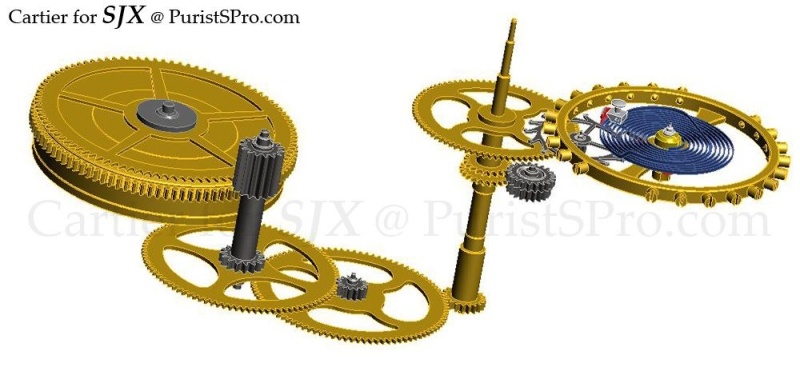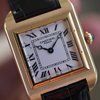
SJX
[Purist]
8540

A closer look at the Astroregulateur with exclusive technical drawings
Apologies for the recent absence my friends, I have been travelling. But I recently obtained several detailed and exclusive technical diagrams of the Astroregulateur which I would like to share.
Late last year, at the Cartier Fine Watchmaking Club event, I was presented with the Rotonde de Cartier Astroregulateur for the first time. Carole Forestier kindly explained it, in detail, several times, but it took me a while to understand it.

But before we dive into the details, a look at the basics. The watch is a whopping 50 mm in diameter, but because of the lightweight niobium-titanium case, the case weighs a mere 55 g. this alloy was first used in the ID One concept watch and in addition to weight savings niobium-titanium is also shock absorbing; according to Cartier the alloy “[converts] any violent impacts into a softer shock charged with the same energy but released over a longer period of time.”

Though it is light and comfortable on the wrist, the sheer size makes it clunky and intimidating. Cartier has acknowledged this feedback from clients and journalists, so the Astroregulateur mechanism might appear in a smaller case in the future.
A new way of looking at an age old problem
Now on to the interesting bit – the 9800 MC movement. The dial is dominated by the rotor-mounted balance and escapement, suspending by a bridge not unlike that used for a tourbillon. Because the balance is affixed to the rotor, it is constantly reverts to the same upright position, when the watch is vertical.

The similarity of the bridge is apt for the Astroregulateur is intended to address the same gravitational errors that the tourbillon was purportedly invented to deal with.
Gravity has two detrimental effects on timekeeping: variation of balance wheel frequency, and second is variations in amplitude. Breguet’s tourbillon averages out the errors caused by gravity due to the constantly rotating balance wheel inside the tourbillon cage.

The Astroregulateur, on the other hand, eliminates the errors in the vertical position by ensuring the balance is always vertical, meaning it can easily be regulated for a single vertical position.
The simple explanation belies the complexity of the mechanism which these diagrams break down.

Fig. 1: Side view of the balance, escapement, rotor, differentials and part of the gear train

Fig. 2: Another view of the balance, escapement, rotor, differentials and part of the gear train

Fig. 3. Balance, escapement, differentials (circled) and the gear train

Fig. 4: Balance, escapement and the gear train - differentials removed

Fig. 5: Another view of balance, escapement and the gear train - differentials removed

Fig. 6: View of the escapement and fourth wheel
Because it is not only about the rotor-mounted balance and escapement but a pendular seconds. This is visually simple, but very cool to watch in action. A pair of differentials in the winding mechanism ensures that the seconds hand is always in the same relative position. So the seconds hand is actually moving in two ways: it is ticking along at 60 seconds a minute as the fourth wheel turns, but it is also moving along with the rotor thanks to the pair of differentials.

Fig. 7: The pair of differentials that enable the pendular seconds

Fig. 8: The pair of differentials that enable the pendular seconds
This video illustrates the movement of the seconds hand very well.
And this official Cartier video explains the entire mechanism briefly which will give you an idea of how all the parts illustrated in the static diagrams above function.

A closer look at the Astroregulateur with exclusive technical drawings

A handsome and intelligent piece

Great explanation SJX


Excellent reporting

Here is a back photo



Price

Interesting....
